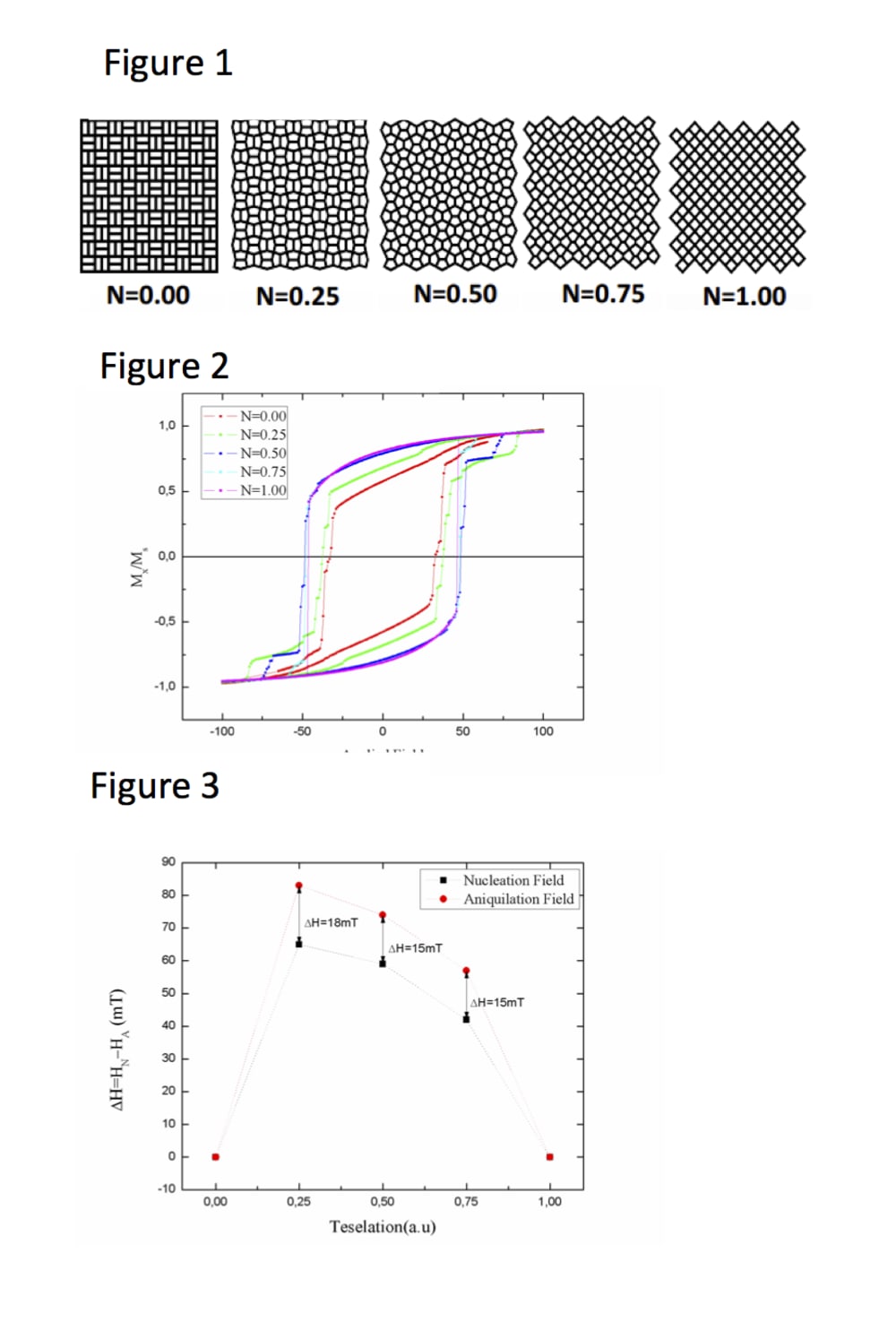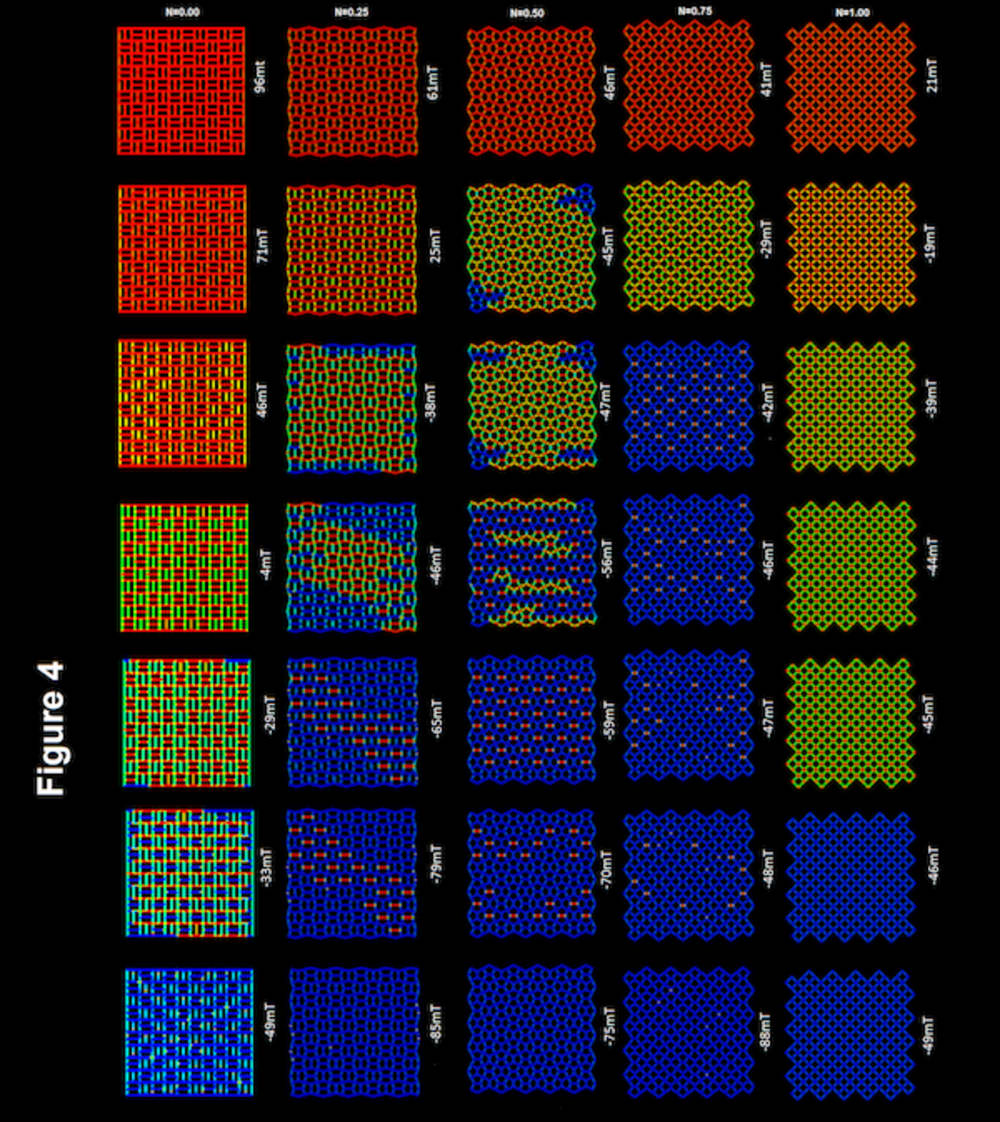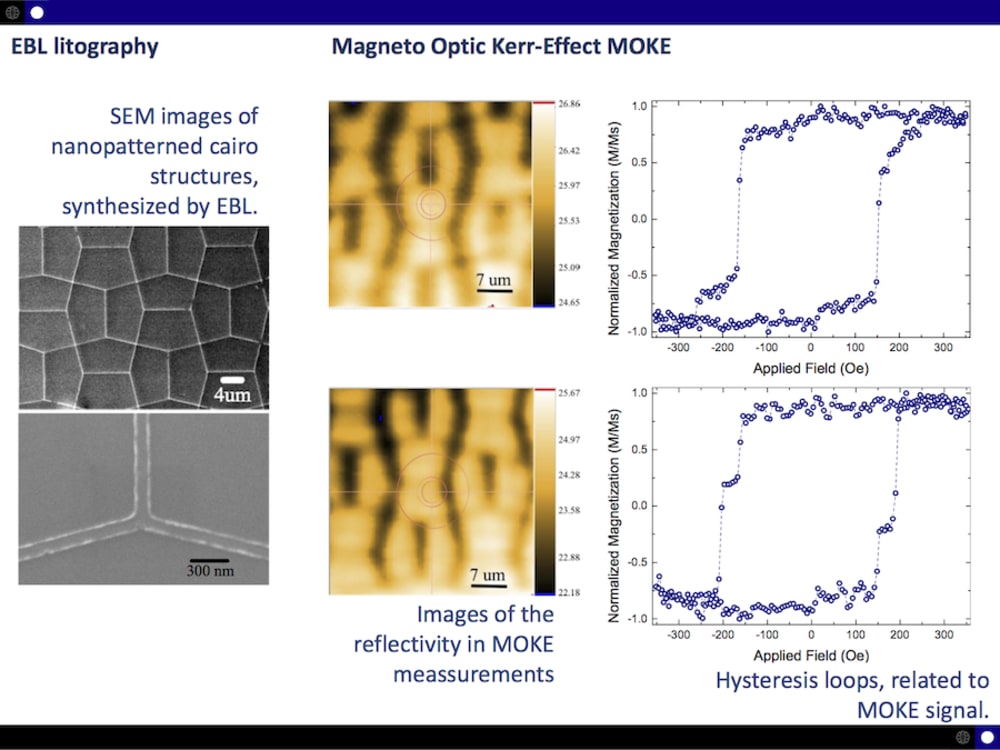The manufacture, characterization and modeling of magnetic antidots have been studied because of their potential applications, as they are promising candidates for a new generation of electronic devices such as transistors. In addition, the absence of the superparamagnetic boundary in nanostructured antidots makes them strong candidates for ultra-high-density recording media.
We have Permalloy thin films with quasicrystalline Cairo (Cairo Transformations) patterns. In these systems it is possible to anchor the magnetization in certain individual elements.
We will investigate by magnetic micromagnetic simulations the magnetic properties of an arrangement of antidots ordered according to a tiling of Cairo Tiling and its different transformations (iterations). Several authors have studied pentagonal Cairo tiling applied to Ising models and magnetic quantum systems [16,17,18]. Our motivation is that using current lithographic techniques it is possible to prepare ordered arrangements of antidots with diverse geometries, in particular with a pentagonal arrangement of Cairo, which owes its origin to just that several streets in Cairo are paved with this design.
We generate a pattern AD quasicrystalline of Cairo where changing the crystallographic order can generate five networks or transformations Cairo (N = 0.00, 0.25, 0.50, 0.75, 1.00). The case N = 0.50 corresponds to Cairo Tiling. Such as shown in Fig. 1
Fig 2. shows the hysteresis loops for the five networks or transformations Cairo (N = 0.00, 0.25, 0.50, 0.75, 1.00), showing that as will deforming network curves samples a "step" plateu which is due to number of horizontal segments belonging to these networks originating anchoring magnetization for certain values of Magnetic Field
Fig. 3. Shows the nucleation and annihilation fields of the stable domains where the magnetization for the five Cairo transformations are anchored in accordance with Fig. 1 and the width of the plateu "steps" are shown. In addition we show a table with the transformations, the width of each domain stable during duration of the applied field.
Fig. 4. Simulations of magnetization for five networks or transformations Cairo (N = 0.00, 0.25, 0.50, 0.75, 1.00) for the external field (B) sweeping between 100 mT and 100 mT in the -directions, respectively.
Fig 5. Shows the hysteresis curves experimentally measured by NanoMOKE and the antidots of Cairo tiling created by lithography for its measurements
Like this entry?
-
About the Entrant
- Name:Eduardo Saavedra
- Type of entry:individual
- Software used for this entry:OOMMF
- Patent status:none








